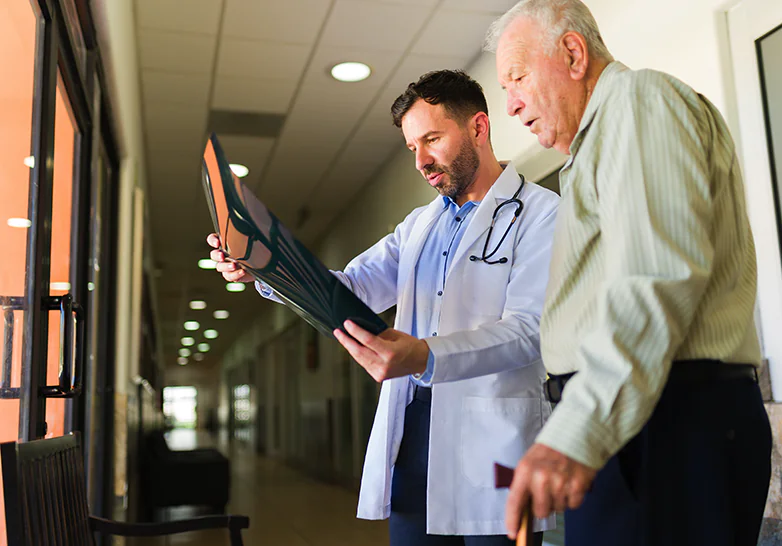Standing tall again after a femoral neck fracture – rehabilitation in older age

An elderly female patient has undergone surgery for a femoral neck fracture. A family member contacted our medical unit asking how they could best support their grandmother in her recovery.
With advancing age, femoral neck fractures become increasingly common, and recovery is strongly influenced by correct early rehabilitation following surgery. During the first weeks, only land-based treatments are appropriate. Due to pain, patients tend to protect the operated limb and avoid moving it, which is far from ideal for later recovery. Without active muscle work, muscle cells begin to break down quickly and muscle strength decreases. In addition, the joint capsule that spans the hip joint also starts to shrink. In other words, the longer the patient remains bedridden and the longer the limbs are kept immobile, the greater the risk that this stiffness will become permanent.
The hip joint is particularly important for maintaining quality of life, as pain-free, full-range hip movement is essential for performing everyday activities smoothly. For this reason, mobilisation and weight-bearing must begin as early as possible after surgery.
In this case, as the six-week wound-healing period had not yet passed, early rehabilitation was initiated. Thermal water, pools and all water-based treatments were excluded, but our physiotherapist-led individual hip therapy — which included both active exercises and passive mobilisation — proved very relieving for the patient, as stretching has a natural pain-relieving effect. This initial phase is crucial not only for restoring the range of motion but also because muscle activity helps remove the fluid that accumulates between the tissues after surgery. Naturally, the exercises were fully adapted to the patient’s condition.
It was also important to practise proper gait and restore stability, helping the patient regain confidence when walking. If these early interventions are missed, faulty gait patterns can become fixed, and correcting them later becomes extremely difficult. Wound healing was supported with soft-laser therapy, and circulation and metabolic stimulation were aided by medical massage. The patient left with the plan to make use of thermal-water treatments as soon as the surgical wound had fully healed.
As this example shows, recovery is achieved gradually, and every phase plays a vital role in ensuring that patients can return to a full and satisfying life even after such a major trauma.